Fort Wilderness

Though Magic Kingdom tends to get all the pomp and circumstance, we can’t forget that it wasn’t alone when it opened in 1971. Of course, there were its two landmark hotels, the Polynesian Village and the Contemporary – often said to be reflections of Adventureland and Tomorrowland, respectively. And following that line of thinking, we have to remember the resort’s complement to Frontierland: Fort Wilderness.
Rushed to completion and opened six weeks after the rest of the resort, Fort Wilderness was as simple as you’d expect a campground to be. Back then, $11 per night got you a campsite, air-conditioned shower facilities, and steamboat transportation right to Magic Kingdom’s front door (launching from the shores of Bay Lake and sailing over the water bridge by the Contemporary that connected the natural lake to the man-made Seven Seas Lagoon). A stay at Fort Wilderness may have been a radical departure from the luxury hotels along the Seven Seas Lagoon, but it was also true to the “Vacation Kingdom’s” ethos – a place to unwind, explore, and relax. (A reason some still favor Fort Wilderness for their vacations today!)

What you might never have considered is just how massive Walt Disney World’s campground really is. Fort Wilderness’ campsites, trails, cabins, and amenities are located in a 750-acre cypress and pine forest, with the actual, developed “Resort” filling around 400 – larger than Magic Kingdom and EPCOT combined.
Fort Wilderness was the perfect place for Disney to invest after the 1973 oil crisis – an asset in Central Florida whose low-cost, low-pressure accommodations could appeal to locals, and whose expansion wouldn’t step on the toes of Disney’s neighboring hotels, still hurting from the economic downturn.
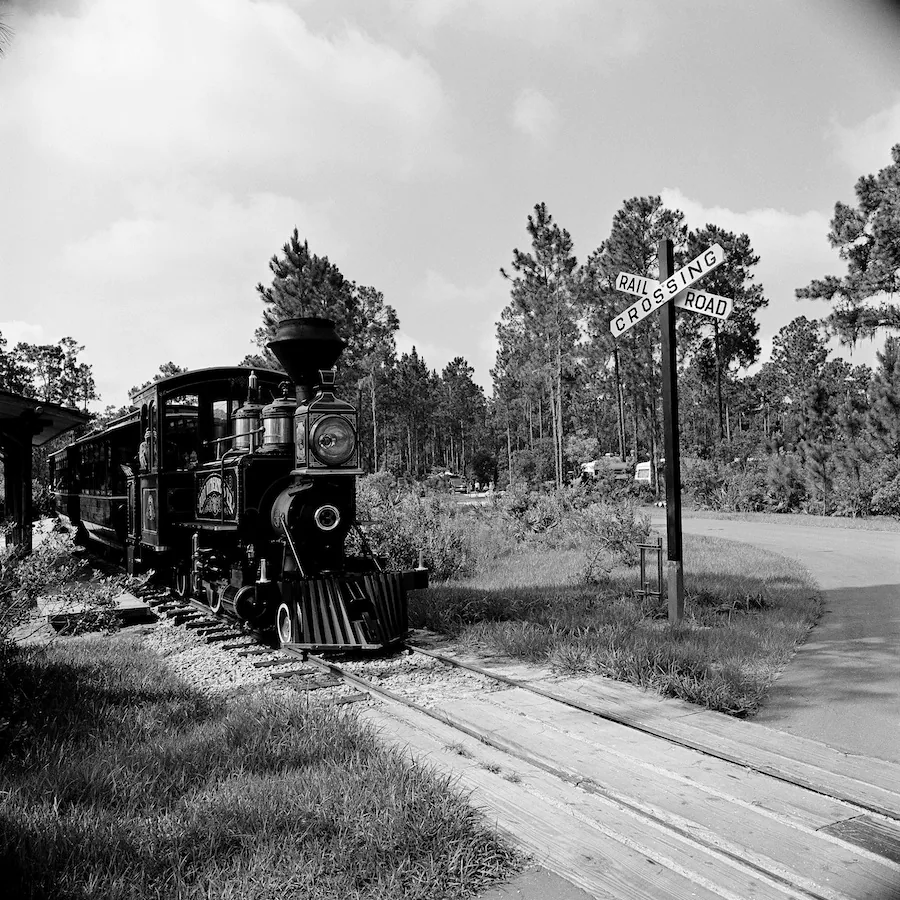
On January 1, 1974, the Fort Wilderness Railroad opened. A 2 ft. 6 in. narrow gauge railway (slightly smaller than the 3 ft. gauge Walt Disney World railroad), the 3.5 mile route was part luxury, but part necessity, ferrying guests between the the resort’s reception area and the “Main Settlement” north near Bay Lake.
Disembarking there, guests would find Tri-Circle-D Ranch – “Home of the Happiest Horses on Earth” that pull horse-drawn carriages on Main Street, U.S.A. As well as offering pony rides and horseback trail riding, the ranch was also open to the public as a petting zoo.
Guests could also find Fort Wilderness Landing, with boat launches not just to Magic Kingdom, but to Treasure Island (later, Discovery Island) an explorable, 11-acre island animal sanctuary that opened that April.
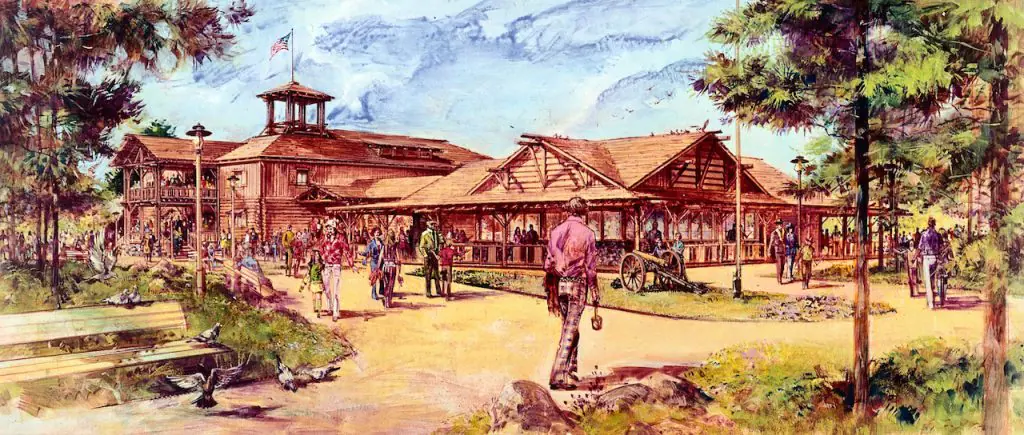
Perhaps the star of 1974’s expansion to Fort Wilderness, though, was Pioneer Hall, debuting in June of that year with the headlining, toe-tapping hootenanny that is the “Hoop-de-Doo Musical Revue.” (Despite rumors that insisted it was extinct, “Hoop-de-Doo did survive the 2020 pandemic, re-opening June 23, 2022 – eight months into the resort’s 50th Anniversary celebration.)
To see Fort Wilderness by the end of 1974 is to see the three-year-old resort at its brightest; a true destination for post-recession visitors and eager locals that beautifully encapsulated all that was pure and simple about the earliest years of Walt Disney World.
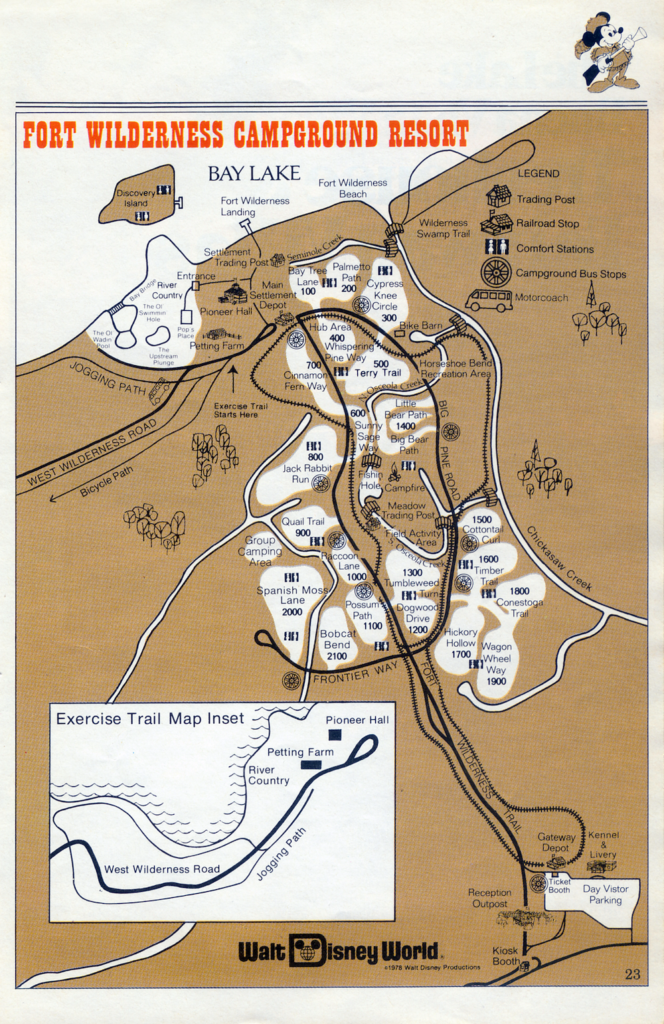
Between trains, horses, boats, and hoedowns, Disney had successfully transformed the northern edge of Fort Wilderness into something much more than a campground. But don’t misunderstand – Fort Wilderness was not yet complete! In supercharging Walt Disney World’s most rustic resort, designers had an idea that could propel the property into a must-visit entertainment destination within the Vacation Kingdom of the World…
Designing Something New
Among themed entertainment aficianados, it’s often said that Walt and his designers had created the world’s first master-planned theme park. Even though amusement parks had existed and evolved for a half-century before, it was in the tide of Disneyland that the genre was crystalized and all else was marked “before” or “after.” From “Main Street” to the hub-and-spokes layout; themed lands to showbuildings around the park’s perimeter, designers had quite literally written the “rules” as they went, developing a now-sacrosanct set of standards, principles, and even words for the industry.
Now, they just had to pull it off again. Because sure, there were pools and waterslides across the country by the 1970s. But a “water park“? Like the theme park two decades before, it simply didn’t exist yet. Disney’s Imagineers would have to once more invent something totally new, learning via the “school of hard knocks” what worked and what didn’t.
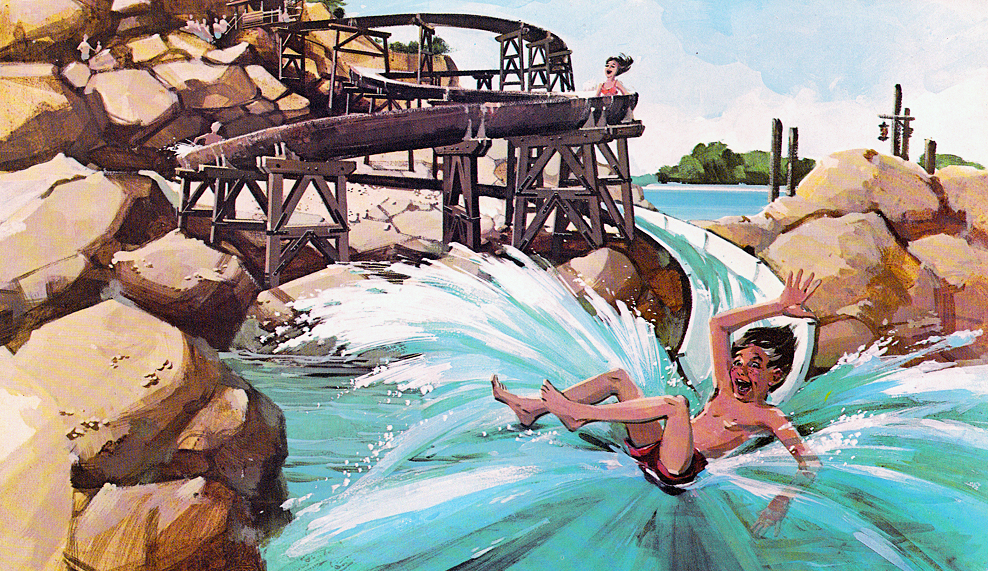
Given that it would be located on a six acre plot of Fort Wilderness overlooking Bay Lake, Disney’s first water park would need a rustic theme to match. That came by way of the same inspiration behind Tom Sawyer Island at Magic Kingdom – beloved American playwright Mark Twain. Stylized around The Adventures of Huckleberry Finn, Fort Wilderness’ new addition began development as “Pop’s Willow Grove” – an ol’ time, ol’ fashioned swimmin’ hole recalling the good ol’ days of rope swings and playing in rock-bottomed rivers.
But how would Disney disguise water slides in a rustic setting? Imagineer Pat Burke was put on the task. In a 2011 interview with Disney and More, Pat recalled, “I worked with [architect] Dick Kline on River Country, which I believe was the first themed water park with trestle-supported slides that I know of. I remember the problem with trying to figure out the slide and its supporting trestles. We had no computers yet and I was given a flat drawing of the proposed slides”
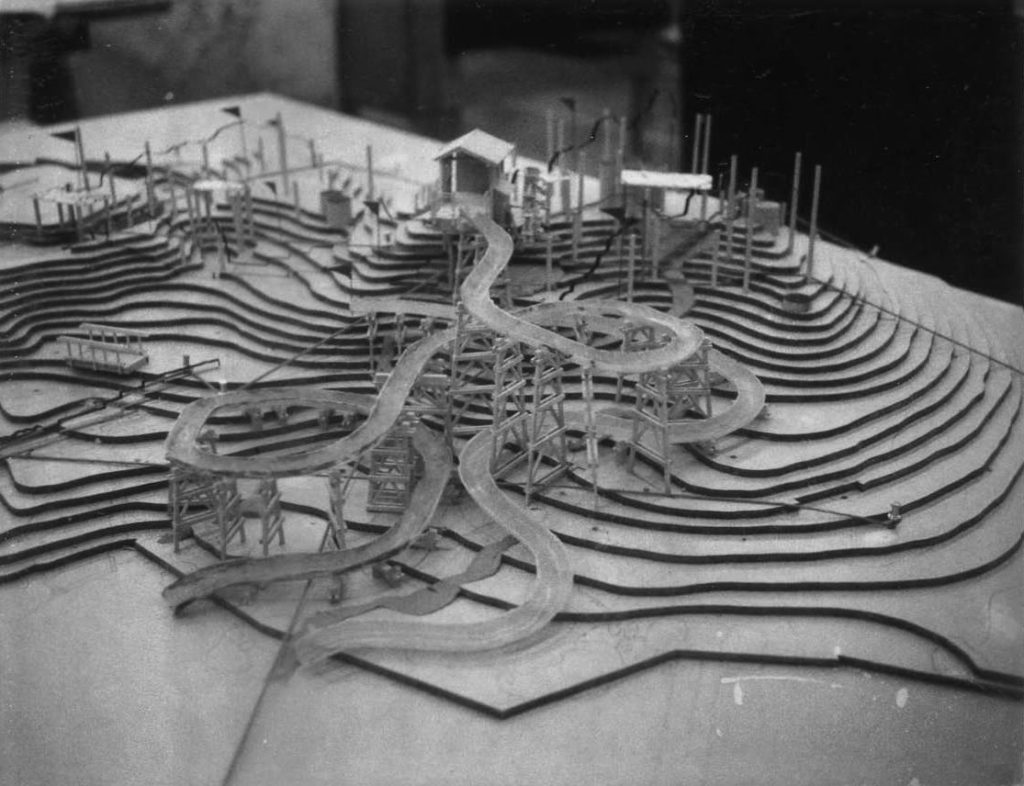
Burke used layered fiberglass to build a topographical model of the proposed park (above) and the rocky hills slides would depart from. Then, he bent rubber garden hoses to the shapes depicted on the initial 2D drawing. Once they were situated along the model’s hillsides, they were used to mold scaled slides. “I built the slides out of fiberglass, just as the real ones would be, and figured out the themed wood tower heights needed for a marble to roll down them.” If the marble made it to the bottom on the scales model, Burke figured a person would make it on the real thing.
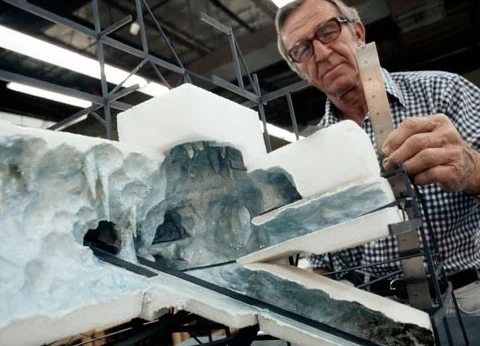
With the layout of the hills and slides set, work passed to Fred Joerger – one of the very first Imagineers assembled in the design of Disneyland (having been poached from Warner Bros. in 1953). Joerger had become Disney’s in-house expert when it came to sculpting rockwork, including such projects as Magic Kingdom’s Tom Sawyer Island and the volcanic rocks formerly found in the Polynesian Village resort’s lobby.
Joerger reportedly had an almost-unimaginable ability to sculpt naturalistic, regional rock forms from clay. In an interview with the LA Times, Harriet Burns recalled of Joerger, “He just had the aesthetic ability to do it himself. What would take a whole team before, he would do overnight.” (When Joerger himself was asked how he could so effortlessly model rockwork, he replied, “You just have to learn to think like a rock.”) Ultimately, the work Joerger did for River Country made the park appear beautifully real, without a hint that its rocky forms and boulders had been man-made.
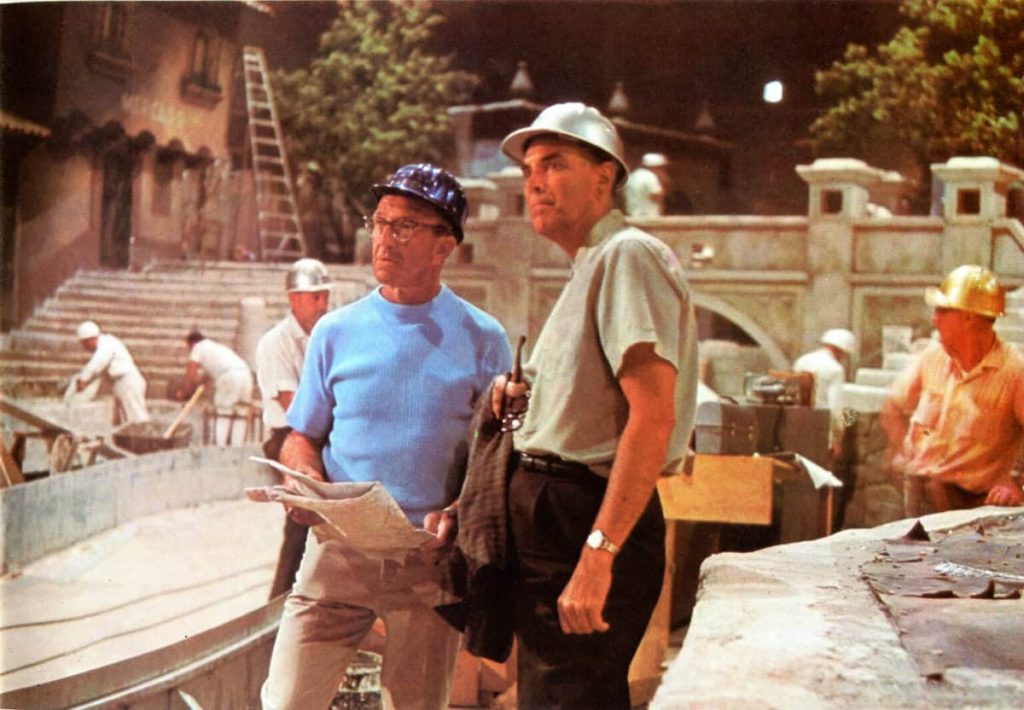
Between Burke’s model and Joerger’s rockwork, River Country was ready to move into development. Which is where one of the park’s more interesting features was designed, and where our “journey of water” comes full circle… But to get into the water at River Country, we’ve got to travel back in time and settle in for a sunny day of fun…
So let’s step back in time to June 1976, as President Ford’s 18-year-old daughter Susan took the inaugural plunge down the park’s premier waterslide and officially decreed River Country open for business. Ready for a dip?


